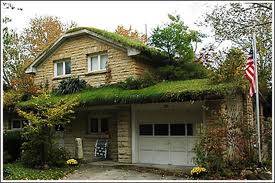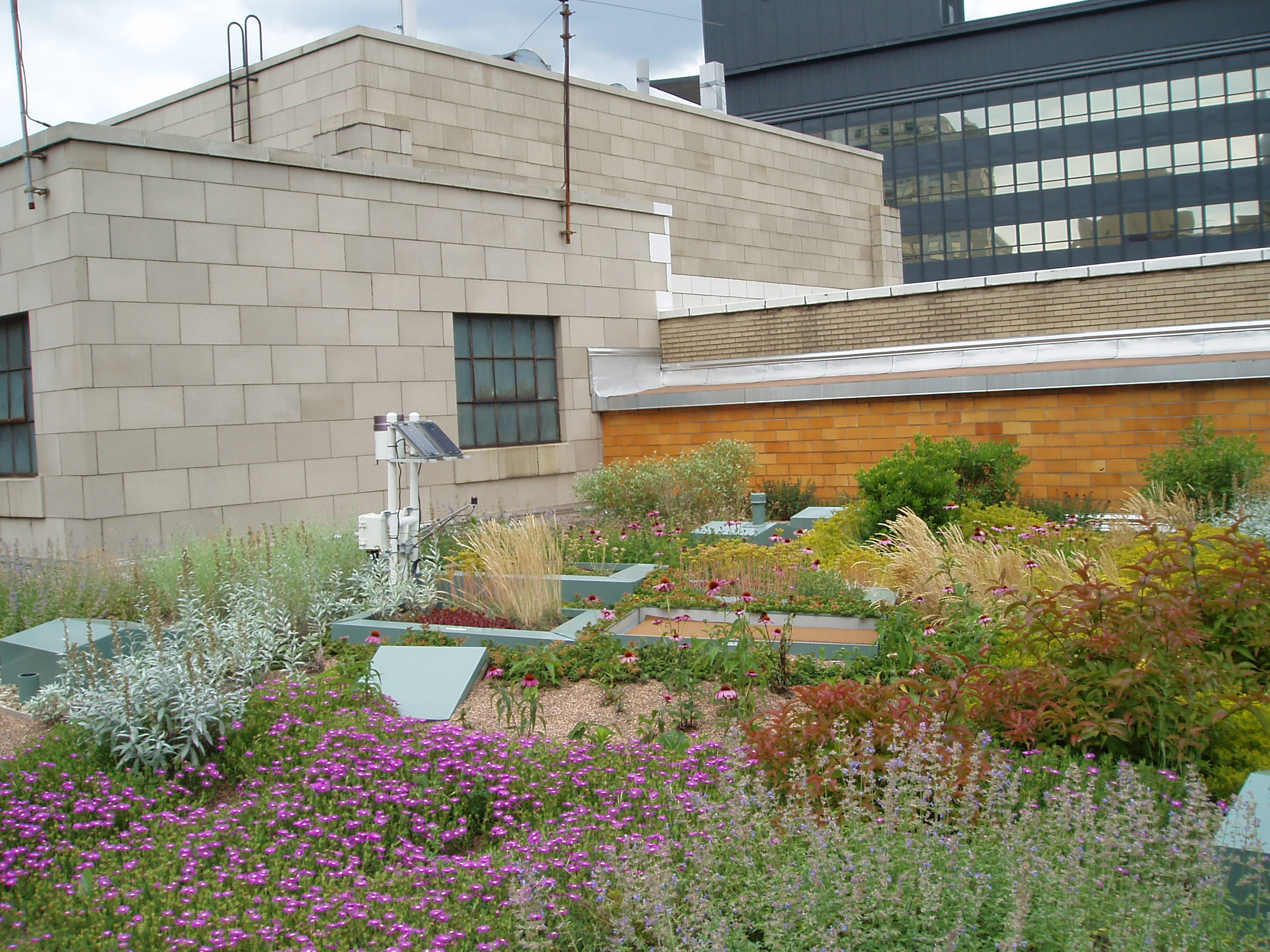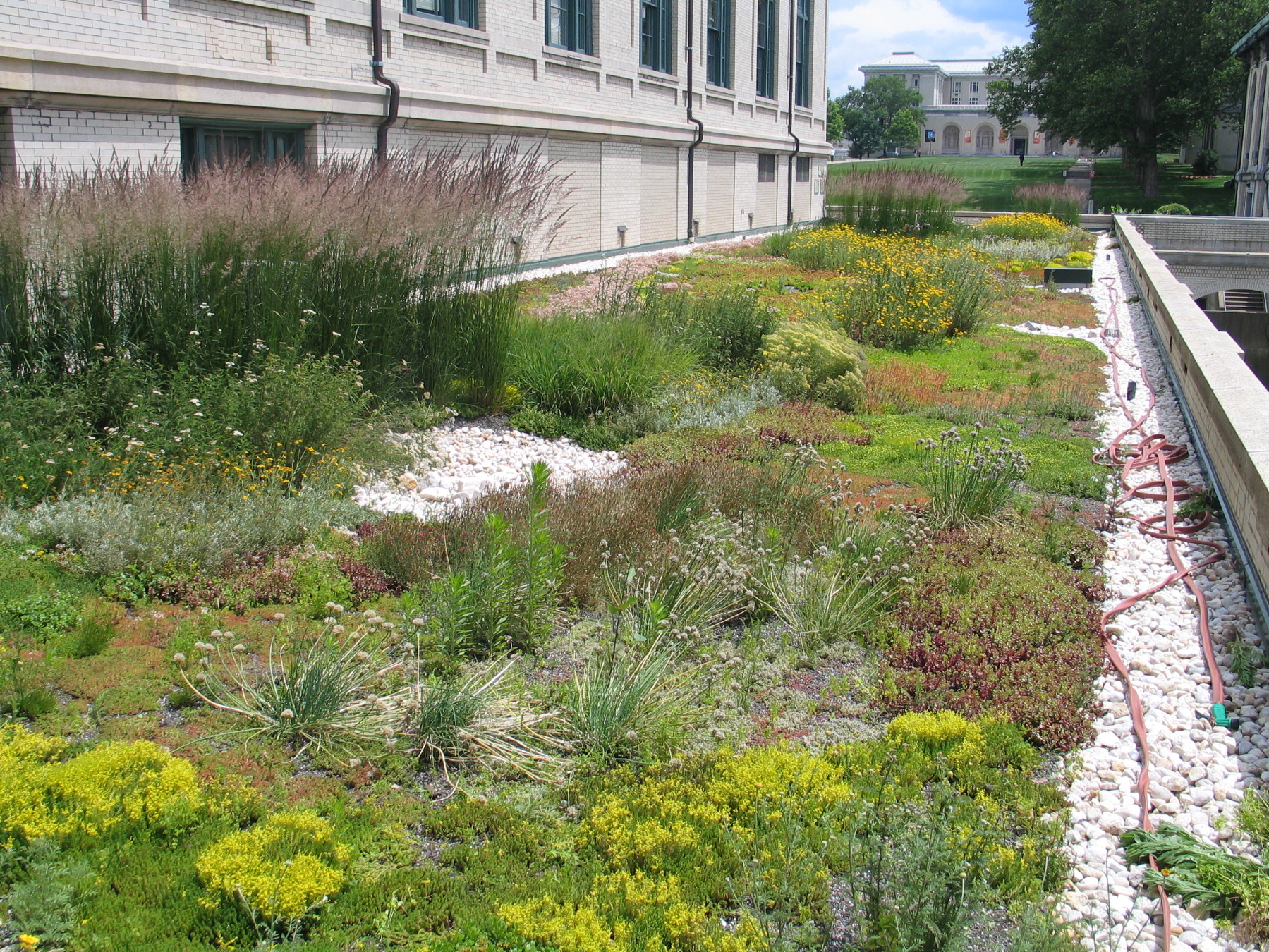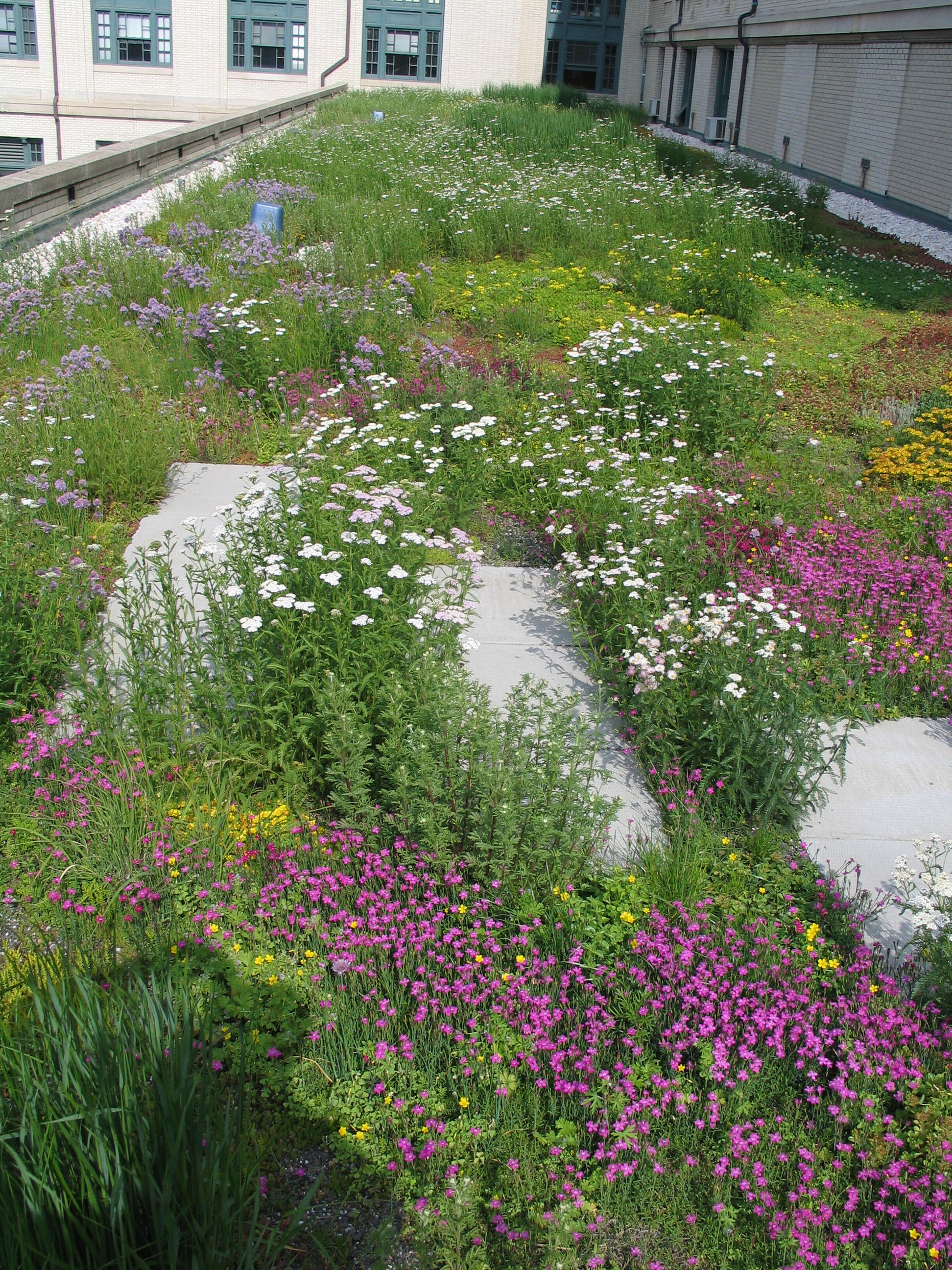
Green roofs can be effectively used to reduce stormwater runoff from commercial, industrial, and residential buildings. In contrast to traditional asphalt or metal roofing, green roofs absorb, store, and later evapotranspire initial precipitation, thereby acting as a stormwater management system and reducing overall peak flow discharge to a storm sewer system. If implemented on a wide scale, Green roofs will reduce the volume of stormwater entering local waterways resulting in less in-stream scouring, lower water temperatures and better water quality. In urban areas with combined sewer systems, Green roofs can reduce the volume of stormwater discharged; CSOs can also be reduced, thus preventing the discharge of millions of gallons of sewage into local waterways.




Green roofs are appropriate for industrial and commercial facilities and large residential buildings such as condominiums or apartment complexes. Green roofs can also prove useful for small residential buildings under some circumstances. Single family residential structures, like all buildings with green roofs, must be able to support the loading from a saturated roof. Furthermore, the green roofs should be easily accessible and residents should understand the maintenance requirements necessary to keep the roof functional.
Consulting a structural engineer to ensure the roof is designed to accommodate the extra weight of a green roof is the first step in any green roof design. A building must be able to support the loading of green roof materials under fully saturated conditions. These materials include a waterproofing layer, a soil or substrate layer, and a plant layer. Plants selected need to be suited for local climatic conditions and can range from sedums, grasses, and wildflowers on extensive roofs to shrubs and small trees on intensive roofs.
Green roofs can be designed to be intensive, semi-intensive, or extensive green roofs.

| Task | Frequency | Maintenance Notes |
| Watering | 1st year, periodically, after 1st year occasionally | May require additional watering during exceptionally dry period |
| Weeding | 1st year, periodically, after 1st year occasionally | This can involve gardening and irrigation. |
| Fertilization | After 1st year, lightly fertilize once a year | This can involve gardening and irrigation. |
| Inspection | Once a year | Green roofs are less prone to leaking than conventional roofs. In most cases, detecting and fixing a leak under a green roof is no more difficult than doing the same for a conventional roof. |

| BMP | O&M ($/sq ft/yr) | Retrofit with Underdrain ($/sq ft) | New Construction with Underdrain ($/sq ft) |
| Green roof | 0.44 | 3.5 | 28.1 |